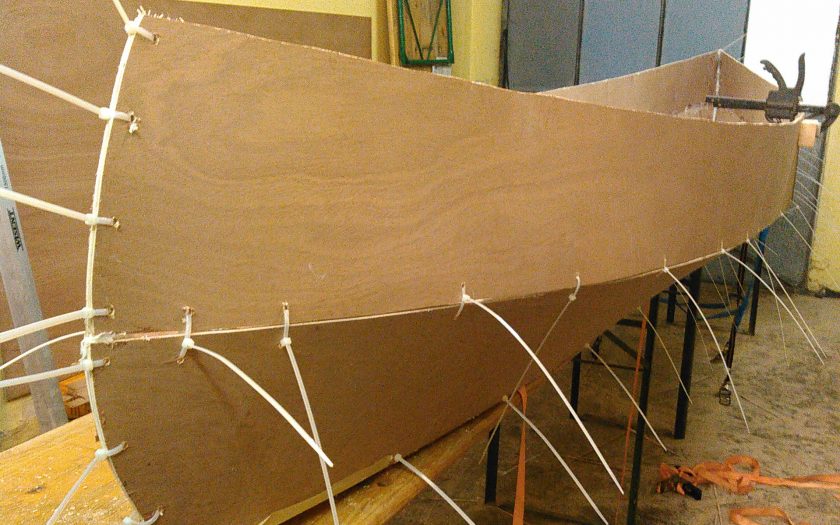Stitch-And-Glue: anybody can build his own boat
Stitch-And-Glue is the best way for amateurs to build their own boats. A lot of plans for all kinds of boats are available from different designers and no special tools or skills are required for the build. Examples are the canoe Hiawatha 16 and the fishing boat Otter 16.
Plywood parts are stitched together by cable ties or wire and glued with epoxy. After that all wooden parts are completely covered and sealed with epoxy which is partially or totally reinforced with fiberglass. The result is a sandwich material stronger than wood and lighter than GRP.
The plywood parts are cut from dimensions in the plan or from templates. CNC cut kits are also available für many designs. Stitch And Glue is suitable for boats up to about 28ft, larger boats would require plywood thicknesses to great to be bent properly.
No worries about mistakes with Stitch-And-Glue
Unlike conventional wood glue epoxy does not require a perfect fit or any pressure to glue. It requires a gap between parts because the epoxy is stronger than the plywood. It won’t make a difference wether this gap is 2mm or 8mm wide. This system does not require precision cuts or a highly skilled builder. Even beginners are able to build nice boats and don’t need to worry about small mistakes: gaps, wrong cuts and drillholes will be filled with epoxy fairing mixture.
To benefit from this advantage the boat needs to be painted to hide all the imperfections. There is no sense in a clear coating on a Stitch-And-Glue construction, at least unless CNC cut parts are used.
Stitch-And-Glue is limited to hard chine hulls, because the plywood panels can be bent only in one direction. So the stations or cross section feature hard angles instead of round forms. This is not a problem for planing motor boats, because planings of other materials are also more or less hard chine hulls. Displacement motor boats and sail boats with hard chine hulls will often have aesthetical restrictions compared to round bilge construction of other materials.
The key to success are not the skills of the builder, but his dedication to invest time and material.
More information on Wikipedia.

 Deutsch
Deutsch